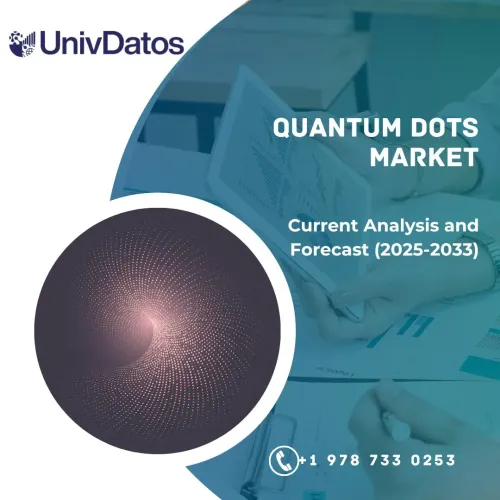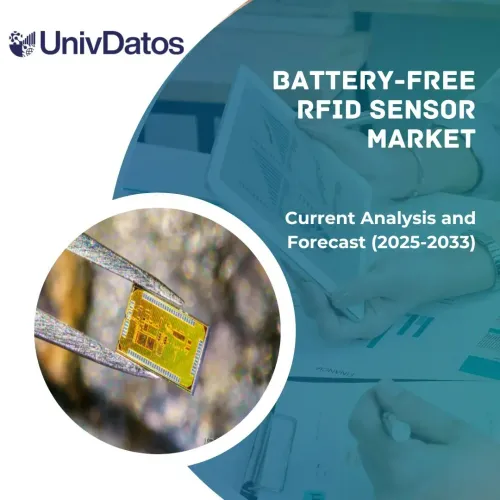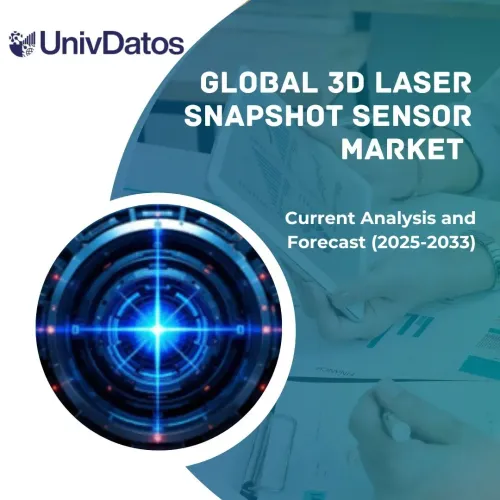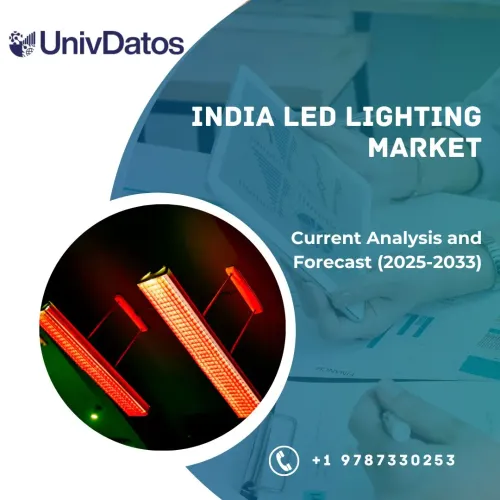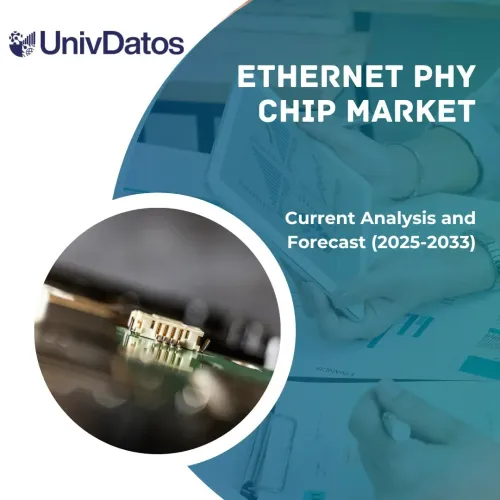- Startseite
- Über uns
- Industrie
- Dienstleistungen
- Lesen
- Kontaktieren Sie uns
Markt für nicht-dispersives Infrarot (NDIR): Aktuelle Analyse und Prognose (2024-2032)
Betonung auf Gastyp (Kohlendioxid, Methan, Kohlenmonoxid und andere); Anwendung (Detektion & Analyse, HLK und Überwachung); Endbenutzer (Industrie, Automobil, Umweltüberwachung, Gesundheitswesen und andere); Region/Land.
Größe & Prognose für nicht-dispersives Infrarot
Der Markt für nicht-dispersives Infrarot wurde 2023 auf 663,2 Millionen USD geschätzt und wird voraussichtlich mit einer robusten CAGR von rund 7,1 % im Prognosezeitraum (2024-2032) wachsen, was auf die rasche Industrialisierung und Urbanisierung in Verbindung mit strengen Umweltvorschriften zur Reduzierung von Emissionen und zur Verbesserung der Luftqualität zurückzuführen ist.
Analyse für nicht-dispersives Infrarot
Der Markt für nicht-dispersives Infrarot (NDIR) kann zur Beschreibung von Gassensortechnologien verwendet werden, die die Intensität des Infrarotlichts, das durch das Gas dringt, nutzen, um die Gaskonzentration zu bestimmen, ohne dass ein Prisma oder ein Gitter erforderlich ist. Diese Sensoren sind beliebt bei der Überwachung und Steuerung der Umwelt, der Sicherheit von Industrien, Heizungs-, Lüftungs- und Klimaanlagen sowie Automobilemissionen. Daher sind die wichtigsten Markttreiber die steigende Nachfrage nach Luftqualitätskontrolle aufgrund strengerer Umweltvorschriften und das Wachstum der NDIR-Sensormarktanwendung in der Automobil-, Gesundheits-, Smart-Building-Industrie und anderen Sektoren. Es gibt auch neue Konzentrationsbereiche bei der Reduzierung von Treibhausgasemissionen und der Verbesserung der Energieeffizienz, was ebenfalls den Markt antreibt.
Aktuelle Trends und Deals auf dem NDIR-Markt erklären den Fokus der Branche auf die Generierung neuer Technologien und die Diversifizierung der Portfolios. So ging beispielsweise die in Japan ansässige Asahi Kasei Microdevices Corp. (AKM) im Januar 2018 eine Partnerschaft mit Senseair AB ein, einem in Schweden ansässigen Hersteller von NDIR-Gassensormodulen, indem sie dessen Aktien erwarb. AKM verstärkt die Realisierung von Geschäften unter Verwendung unsichtbarer Lichterkennung (z. B. IR und UV) unter Verwendung seiner Kerntechnologie der Verbindungshalbleiter. Mit geringer Größe, hoher Empfindlichkeit und hoher Qualität werden die Infrarot-(IR)-Licht emittierenden Elemente und Detektoren von AKM verstärkt in den Gassensoren eingesetzt, die die Konzentration von Gasen erfassen, um die Nachfrage nach Luftqualitätskontrolle in Haushalten, Büros und Fabriken zu befriedigen. Es wird prognostiziert, dass der Markt für CO2-Sensoren in Bezug auf geschäftliche Maßnahmen zur Bekämpfung der globalen Erwärmung exponentiell wachsen wird.
Darüber hinaus wird prognostiziert, dass ein weiterer Markt für NDIR-Sensoren die asiatischen Länder sein werden, einschließlich China, Indien und Länder in Südostasien. Diese Länder durchlaufen Industrialisierung, Urbanisierung und staatliche Maßnahmen zur Reduzierung der Luftverschmutzung und zur Effizienz der Energienutzung. Chinas Belt and Road Initiative und Indiens Schwerpunkt auf nachhaltigem städtischen Wachstum haben zu Investitionen in intelligente Infrastrukturen wie NDIR-basierte HLK geführt. Darüber hinaus wird erwartet, dass die auf Emissionsreduzierung ausgerichteten Regulierungsrichtlinien, wie Chinas Blue Sky Plan und Indiens National Clean Air Programme (NCAP), die Einführung von NDIR-Sensoren in diesen Regionen weiter vorantreiben werden.
Trends für nicht-dispersives Infrarot
Dieser Abschnitt erörtert die wichtigsten Markttrends, die die verschiedenen Segmente des nicht-dispersiven Infrarots beeinflussen, wie sie von unserem Team aus Forschungsexperten identifiziert wurden.
Regierungsrichtlinien zur Unterstützung der nicht-dispersiven Infrarot-Industrie
Regierungsrichtlinien zur Unterstützung der nicht-dispersiven Infrarot-(NDIR)-Industrie werden in erster Linie durch die Notwendigkeit bestimmt, Emissionen zu regulieren, die Arbeitssicherheit zu gewährleisten und die ökologische Nachhaltigkeit zu fördern.
Hier sind einige wichtige Richtlinien:
- Emissionskontrollvorschriften: Es gibt die gesetzlichen Vorschriften der Emissionshöhe in der Europäischen Union in Form von IED und in den USA als Clean Air Act, die die Verwendung von Gasüberwachungstechnologien, z. B. NDIR-Sensoren, zur Kontrolle der Emissionen von CO2, Methan und anderen Treibhausgasen für Industrien obligatorisch machen.
- Arbeitsschutzbestimmungen: Richtlinien zu Arbeitsschutz und -sicherheit wie die OSHA-Regeln in den USA oder ähnliche Regeln in Europa und asiatischen Ländern schreiben den Industrien vor, verschiedene gefährliche Gase und die Sicherheit von Mitarbeitern zu überprüfen, die in solchen Umgebungen arbeiten. Der hergestellte Sensortyp ist ein NDIR-Sensor zur Erkennung von Gasen und Lecks in gefährlichen Umgebungen.
- Automobil-Emissionsnormen: Anforderungen an Selbstfahrerfahrzeuge wie die Euro-6-Normen in Europa und die BS-VI-Normen in Indien zwingen Auto-Stakeholder, moderne Emissionskontrollen einschließlich NDIR-Sensoren zu integrieren, um emissionsarme Fahrzeuge zu erreichen.
- Umweltüberwachungsrichtlinien: Verschiedene Zuschüsse für Luftqualität und Umweltschutz, einschließlich der EPA-Vorschriften in den Vereinigten Staaten und eines ähnlichen Rahmens in der Europäischen Union, wirken als Anreiz für die Verwendung der NDIR-Technologie bei der Überwachung von Luftschadstoffen und der Einhaltung festgelegter Luftreinheitsstandards.
- Energieeffizienz- und Green-Building-Initiativen: EPBD (Energy Performance of Buildings Directive) zur Energieeffizienz von Gebäuden in Europa betont die Verwendung von NDIR-Sensoren in HLK-Systemen für eine bessere Innenraumluftqualität und Energieeffizienz in Programmen zur Stadtentwicklung.
- Initiativen zum Klimawandel: Internationale Verträge, einschließlich des Pariser Klimaabkommens, drängen die Nationen, die Emissionen von Treibhausgasen zu reduzieren; daher die verstärkte Nutzung dieser NDIR-Sensoren zur Messung von CO2 und Methan in verschiedenen Sektoren.
- Gesundheitsvorschriften: Die meisten Patientensicherheits- und Gasüberwachungen in Krankenhäusern, einschließlich der Richtlinien der Food and Drug Administration (FDA) in den Vereinigten Staaten und anderer gleichwertiger Stellen, unterstützen die Verwendung der NDIR-Technologie in der medizinischen Gasdetektion sowie in der Anästhesieüberwachung.

APAC wird voraussichtlich mit einer signifikanten CAGR im Prognosezeitraum wachsen
Der Markt für nicht-dispersives Infrarot (NDIR) in der Region Asien-Pazifik APAC nimmt die Position des größten Marktes ein, die schnellste Wachstumsrate ist auf die industrielle Entwicklung, die Urbanisierung sowie die Umsetzung strengerer Umweltstandards zurückzuführen. NDIR-Sensoren haben auch eine steigende Nachfrage im Industriesegment erfahren, insbesondere in der APAC-Region, insbesondere in China, Indien und Japan, aufgrund ihrer Verwendung bei der Emissionsüberwachung, der Luftqualität und der Erkennung von Gaslecks. Da diese Länder ihre verarbeitenden Industrien stärken und die städtische Struktur erweitern, benötigen sie eine gute und genaue Gasdetektionstechnologie, um Umweltgesetze und Sicherheitsbestimmungen einzuhalten.
Insbesondere die rasche Zunahme der Urbanisierung zusätzlich zur Industrialisierung in Indien hat die Nachfrage nach verbesserten Beobachtungssystemen gefördert. Bedenken hinsichtlich des steigenden Verschmutzungsniveaus haben die Regierung gezwungen, Richtlinien zu entwickeln, die die Überwachung von Industrieemissionen und Luftqualität verbessern, wodurch die Nachfrage nach NDIR-Sensoren steigt. Mit einer hoch entwickelten technologischen Industriebasis und entwickelten Produktionsindustrien begrüßen auch Japan und Südkorea die NDIR-Technologie in den Automobil-, HLK- und Gesundheitsmärkten. Die Automobilindustrie in APAC, die durch den Aufstieg von Elektrofahrzeugen und die Verschärfung der Emissionsvorschriften angetrieben wird, trägt ebenfalls erheblich zur wachsenden Verwendung von NDIR-Sensoren in Emissionskontrollsystemen bei.
Darüber hinaus treibt die zunehmende Investition der Region in Smart-City-Initiativen und IoT-basierte Infrastruktur den NDIR-Markt weiter an. Länder wie China, Indien und Singapur übernehmen die Führung bei der Bereitstellung von Smart-City-Projekten, die energieeffizienten Systemen und ökologischer Nachhaltigkeit Priorität einräumen. NDIR-Sensoren spielen eine zentrale Rolle in intelligenten HLK-Systemen und Umweltüberwachungsgeräten und tragen dazu bei, Energieeffizienz zu gewährleisten und die optimale Luftqualität in städtischen Umgebungen aufrechtzuerhalten. Die weit verbreitete Einführung dieser Technologien in ganz APAC positioniert die Region als einen wichtigen Markt für NDIR-Sensoren, wobei die Wachstumschancen mit zunehmender Urbanisierung und Industrialisierung weiter zunehmen.

Überblick über die nicht-dispersive Infrarot-Industrie
Der Markt für nicht-dispersives Infrarot ist wettbewerbsintensiv und fragmentiert, mit der Präsenz mehrerer globaler und internationaler Marktteilnehmer. Die wichtigsten Akteure übernehmen verschiedene Wachstumsstrategien, um ihre Marktpräsenz zu erhöhen, wie z. B. Partnerschaften, Vereinbarungen, Kooperationen, Neueinführungen von Produkten, geografische Expansionen sowie Fusionen und Übernahmen. Einige der wichtigsten Akteure auf dem Markt sind ABB Group, Dynament Ltd. (PST), ELT SENSOR Corp., Emerson Electric Co., Figaro Engineering Inc., Gas Sensing Solutions (GSS), Honeywell International Inc., HORIBA, Ltd., SenseAir AB und Siemens AG.
Nachrichten zu nicht-dispersivem Infrarot
- Januar 2018 –Asahi Kasei Microdevices Corp. (AKM) stimmte der Übernahme der Aktien von Senseair AB, einem schwedischen Hersteller von NDIR-Gassensormodulen, zu. AKM beschleunigt die Entwicklung von Geschäften unter Verwendung unsichtbarer Optik (z. B. IR und UV) auf der Grundlage seiner Kerntechnologie für Verbindungshalbleiter. Mit geringer Größe, hoher Empfindlichkeit und hoher Qualität werden die Infrarot-(IR)-Licht emittierenden Elemente und Detektoren von AKM zunehmend in Gassensoren eingesetzt, die die Gaskonzentration erfassen, um den wachsenden Bedarf an Luftqualitätsüberwachung in Innenräumen wie Wohnungen, Büros und Fabriken zu decken. Es wird erwartet, dass das Geschäft mit CO2-Sensoren im Zusammenhang mit Maßnahmen zur Verhinderung der globalen Erwärmung rasch wachsen wird.
Berichterstattung über nicht-dispersives Infrarot

Gründe für den Kauf dieses Berichts:
- Die Studie beinhaltet eine Marktgrößen- und Prognoseanalyse, die von authentifizierten wichtigen Branchenexperten validiert wurde.
- Der Bericht gibt einen schnellen Überblick über die Gesamtleistung der Branche auf einen Blick.
- Der Bericht enthält eine eingehende Analyse prominenter Branchenkollegen mit einem primären Fokus auf wichtige Finanzkennzahlen des Geschäfts, Produktportfolios, Expansionsstrategien und jüngste Entwicklungen.
- Detaillierte Untersuchung von Treibern, Beschränkungen, wichtigen Trends und Chancen in der Branche.
- Die Studie deckt den Markt umfassend über verschiedene Segmente ab.
- Detaillierte Analyse der Industrie auf regionaler Ebene.
Anpassungsoptionen:
Das globale nicht-dispersive Infrarot kann gemäß den Anforderungen oder einem anderen Marktsegment weiter angepasst werden. Außerdem versteht UMI, dass Sie möglicherweise Ihre eigenen Geschäftsanforderungen haben, daher können Sie sich gerne an uns wenden, um einen Bericht zu erhalten, der Ihren Anforderungen vollständig entspricht.
Inhaltsverzeichnis
Forschungsmethodik für die nicht-dispersive Infrarot-Analyse (2024-2032)
Die Analyse des historischen Marktes, die Schätzung des aktuellen Marktes und die Prognose des zukünftigen Marktes für globales nicht-dispersives Infrarot waren die drei Hauptschritte zur Erstellung und Erforschung der Akzeptanz von nicht-dispersivem Infrarot in den wichtigsten Regionen weltweit. Es wurden umfassende Sekundärrecherchen durchgeführt, um die historischen Marktzahlen zu ermitteln und die aktuelle Marktgröße zu schätzen. Zweitens wurden zahlreiche Erkenntnisse und Annahmen berücksichtigt, um diese Erkenntnisse zu validieren. Darüber hinaus wurden umfassende Primärinterviews mit Branchenexperten entlang der Wertschöpfungskette des globalen Marktes für nicht-dispersives Infrarot durchgeführt. Nach Annahme und Validierung der Marktzahlen durch Primärinterviews wandten wir einen Top-Down-/Bottom-Up-Ansatz an, um die gesamte Marktgröße zu prognostizieren. Danach wurden Marktaufschlüsselungs- und Datentriangulationsmethoden angewendet, um die Marktgröße von Segmenten und Untersegmenten der Branche zu schätzen und zu analysieren. Die detaillierte Methodik wird im Folgenden erläutert:
Analyse der historischen Marktgröße
Schritt 1: Ausführliche Untersuchung von Sekundärquellen:
Es wurde eine detaillierte Sekundärstudie durchgeführt, um die historische Marktgröße des nicht-dispersiven Infrarots über unternehmensinterne Quellen wieGeschäftsberichte und Jahresabschlüsse, Präsentationen zur Leistung, Pressemitteilungen usw.und externe Quellen einschließlichJournale, Nachrichten & Artikel, Veröffentlichungen der Regierung, Veröffentlichungen der Wettbewerber, Branchenberichte, Datenbanken Dritter und andere glaubwürdige Veröffentlichungen.
Schritt 2: Marktsegmentierung:
Nachdem wir die historische Marktgröße des nicht-dispersiven Infrarots ermittelt hatten, führten wir eine detaillierte Sekundäranalyse durch, um historische Markterkenntnisse und -anteile für verschiedene Segmente und Untersegmente für wichtige Regionen zu sammeln. Wichtige Segmente sind in dem Bericht enthalten, wie z. B. Gastyp, Anwendung und Endbenutzer. Darüber hinaus wurden Analysen auf Länderebene durchgeführt, um die Gesamtakzeptanz von Testmodellen in dieser Region zu bewerten.
Schritt 3: Faktorenanalyse:
Nachdem wir die historische Marktgröße verschiedener Segmente und Untersegmente ermittelt hatten, führten wir eine detaillierteFaktorenanalysedurch, um die aktuelle Marktgröße des nicht-dispersiven Infrarots zu schätzen. Darüber hinaus führten wir eine Faktorenanalyse unter Verwendung abhängiger und unabhängiger Variablen wie Gastyp, Anwendung und Endbenutzer des Marktes für nicht-dispersives Infrarot durch. Es wurde eine gründliche Analyse der Angebots- und Nachfrageszenarien unter Berücksichtigung wichtiger Partnerschaften, Fusionen und Übernahmen, Geschäftserweiterungen und Produkteinführungen im nicht-dispersiven Infrarot-Sektor weltweit durchgeführt.
Schätzung & Prognose der aktuellen Marktgröße
Aktuelle Marktgrößenbestimmung:Basierend auf umsetzbaren Erkenntnissen aus den obigen 3 Schritten kamen wir zur aktuellen Marktgröße, den wichtigsten Akteuren im globalen nicht-dispersiven Infrarot und den Marktanteilen der Segmente. Alle erforderlichen prozentualen Anteile, Aufteilungen und Marktgliederungen wurden unter Verwendung des oben genannten Sekundäransatzes ermittelt und durch Primärinterviews verifiziert.
Schätzung & Prognose:Für die Marktschätzung und -prognose wurden verschiedenen Faktoren, darunter Treibern & Trends, Einschränkungen und Chancen für die Stakeholder, Gewichte zugewiesen. Nach der Analyse dieser Faktoren wurden relevante Prognosetechniken, d. h. der Top-Down-/Bottom-Up-Ansatz, angewendet, um die Marktprognose für 2032 für verschiedene Segmente und Untersegmente in den wichtigsten Märkten weltweit zu erstellen. Die Forschungsmethodik zur Schätzung der Marktgröße umfasst:
- Die Marktgröße der Branche, ausgedrückt in Umsatz (USD), und die Akzeptanzrate des nicht-dispersiven Infrarots in den wichtigsten Märkten im Inland
- Alle prozentualen Anteile, Aufteilungen und Aufschlüsselungen von Marktsegmenten und Untersegmenten
- Wichtige Akteure im globalen nicht-dispersiven Infrarot in Bezug auf die angebotenen Produkte. Außerdem die Wachstumsstrategien, die diese Akteure anwenden, um in dem schnell wachsenden Markt zu bestehen
Marktgrößen- und -anteilsvalidierung
Primärforschung:Es wurden ausführliche Interviews mit den Key Opinion Leaders (KOLs) geführt, darunter Top-Level-Führungskräfte (CXO/VPs, Vertriebsleiter, Marketingleiter, Betriebsleiter, Regionalleiter, Landesleiter usw.) in wichtigen Regionen. Die Ergebnisse der Primärforschung wurden dann zusammengefasst und eine statistische Analyse durchgeführt, um die aufgestellte Hypothese zu belegen. Die Ergebnisse der Primärforschung wurden mit den Sekundärergebnissen konsolidiert, wodurch Informationen in umsetzbare Erkenntnisse umgewandelt wurden.
Aufteilung der primären Teilnehmer in verschiedenen Regionen

Markt-Engineering
Die Datentriangulationstechnik wurde eingesetzt, um die gesamte Marktschätzung abzuschließen und präzise statistische Zahlen für jedes Segment und Untersegment des globalen nicht-dispersiven Infrarots zu erhalten. Die Daten wurden in mehrere Segmente & Untersegmente aufgeteilt, nachdem verschiedene Parameter und Trends in den Bereichen Gastyp, Anwendung und Endbenutzer auf dem globalen Markt für nicht-dispersives Infrarot untersucht wurden.
Das Hauptziel der globalen Studie zum nicht-dispersiven Infrarot
Die aktuellen und zukünftigen Markttrends des globalen Marktes für nicht-dispersives Infrarot wurden in der Studie ermittelt. Investoren können strategische Erkenntnisse gewinnen, um ihre Entscheidungen für Investitionen auf der qualitativen und quantitativen Analyse, die in der Studie durchgeführt wurde, zu basieren. Aktuelle und zukünftige Markttrends bestimmten die allgemeine Attraktivität des Marktes auf regionaler Ebene und boten den Industrieteilnehmern eine Plattform, um den unerschlossenen Markt zu nutzen und von einem First-Mover-Vorteil zu profitieren. Weitere quantitative Ziele der Studien umfassen:
- Analysieren Sie die aktuelle und prognostizierte Marktgröße des nicht-dispersiven Infrarots in Bezug auf den Wert (USD). Analysieren Sie auch die aktuelle und prognostizierte Marktgröße verschiedener Segmente und Untersegmente
- Zu den Segmenten in der Studie gehören die Bereiche Gastyp, Anwendung und Endbenutzer
- Definition und Analyse des regulatorischen Rahmens für die nicht-dispersive Infrarot-Industrie
- Analyse der Wertschöpfungskette mit der Präsenz verschiedener Intermediäre sowie Analyse des Kunden- und Wettbewerbsverhaltens der Branche
- Analysieren Sie die aktuelle und prognostizierte Marktgröße des nicht-dispersiven Infrarots für die wichtigsten Regionen
- Zu den wichtigsten Ländern der in dem Bericht untersuchten Regionen gehören Asien-Pazifik, Europa, Nordamerika und der Rest der Welt
- Unternehmensprofile des nicht-dispersiven Infrarots und die Wachstumsstrategien, die von den Marktteilnehmern angewendet werden, um in dem schnell wachsenden Markt zu bestehen
- Detaillierte regionale Analyse der Branche
Häufig gestellte Fragen FAQs
Q1: Wie groß ist die aktuelle Marktgröße und das Wachstumspotenzial des nicht-dispersiven Infrarot (NDIR)-Marktes?
Q2: Was sind die treibenden Faktoren für das Wachstum des nicht-dispersiven Infrarot-Marktes?
Q3: Welches Segment hat den größten Anteil am Markt für nicht-dispersives Infrarot nach Endverbraucher?
Q4: Was sind die neuen Technologien und Trends auf dem Markt für nicht-dispersives Infrarot?
Q5: Welche Region wird den Markt für nicht-dispersives Infrarot (NDIR) dominieren?
Verwandt Berichte
Kunden, die diesen Artikel gekauft haben, kauften auch



